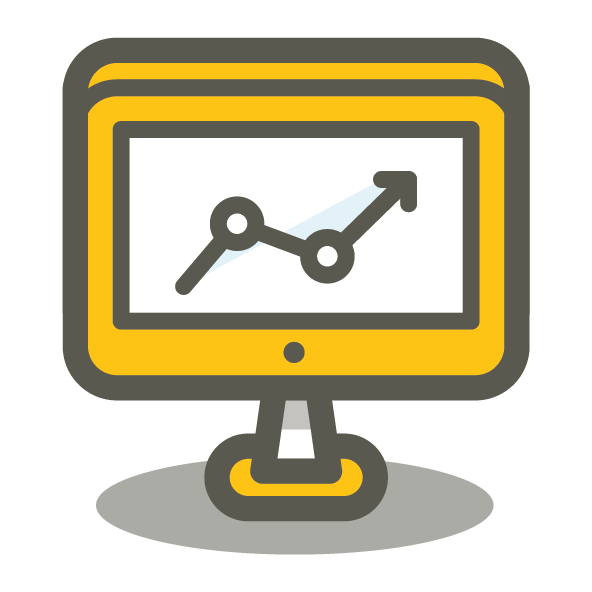With technology’s fast-paced and rapidly evolving landscape, financial forecasting can prove challenging for many tech companies. What’s more, advancements in technology and changes in consumer preferences can drastically disrupt the market, making it difficult to predict future trends and revenue streams. Research and development costs can further complicate matters and this can prove a challenge for businesses to accurately predict expenses and profits.
To ensure the long-term stability of technology companies, rigorous financial forecasting is of the utmost importance. It is only feasible to have a clear strategy for growth with a realistic grasp of their financial status, allowing for informed judgements on resource allocation, risk management, and acquiring capital for growth. A complete understanding of the company’s goods, services, and competitive environment is essential for an accurate projection of future revenue, costs, and profits based on a robust examination of the company’s financial statements. Additionally, flexibility is needed to adapt to the quickly shifting environments.
Can you trust your financial forecasting?
If you are a startup or an established tech business, you will likely be aware of the significance of financial forecasting when managing cash flow. While you may already have a forecast or budget in place, it is important to consider its reliability and whether it can withstand external scrutiny.
We’ve outlined 9 steps that could help you master the art of financial forecasting. It’s key to note that although they have been written with a tech business in mind, these 9 steps are universally applicable for businesses of all types and across a variety of industries.
Review historical data
Historical data can be valuable for companies to gauge their performance. Although this may be more suited to established tech businesses than startups, historical data is key to spotting trends, fluctuating revenue, expenditure, and profit margins. Historical data can also help companies to identify new opportunities, improve risk management, and spot monetary “pinch points”.
Strategic KPI monitoring or informed forecasts
Are your crucial KPIs from management reports actively integrated into forecasts? This alignment and future-focused strategy is pivotal. Regular KPI tracking enhances adaptability to market shifts, allowing timely forecast adjustments. This symbiotic relationship between KPIs and forecasts ensure agile decision-making, which is a vital trait in today’s business landscape.
Ensuring reliable forecasts through reliable accounting records
A forecast’s accuracy hinges on its foundation – the data it rests upon. Poor accounting records yield underwhelming forecasts. Good quality management data ensures forecasts are based on current and dependable insights. This synergy fosters trustworthy forecasts, empowering informed decision-making. A reliable forecast becomes your compass, guiding well-informed choices for your company’s trajectory.
Elevating forecasting efficiency with specialised software
While Excel is commonly used, it’s not tailored for precise forecasting. Superior alternatives exist, seamlessly integrating with accounting software. These tools facilitate swift creation of comprehensive three-way forecasts (covering P&L, balance sheet and cashflow). They offer real-time adaptability for shifting assumptions and scenarios, drastically reducing error susceptibility. Implementing the right applications streamlines the earlier tips. Many of these solutions rely on robust historical data, simplifying baseline creation and automatic KPI computation. Experience the power of specialised software, propelling your forecasting prowess to new heights.
Exploring assumptions
Is your forecast within an application that allows it to play around with the assumptions and build alternative scenarios? If so, you can use this to stress test your business. Through modifying the assumptions, you can demonstrate the effect of rising costs, fluctuating interest and exchange rates, and can be prepared if these come to fruition. For instance, to assess how much you would need to increase turnover to maintain margins etc.
Evaluate your forecast against actual performance
This step is often overlooked but is quite important to identify any vulnerabilities within the original forecast. Take into consideration how your previous performance was against that forecast and where did it differ? Recognising the causes for these deviations can then help generate more reliable forecasts in the future.
R&D and innovation budgeting
R&D and innovation often have tax benefits. Technology businesses will potentially already be making claims for tax relief as a consequence of extensive investment in research and development. Claims can lead to substantial cash repayments or a reduction in the tax needed to be settled. Your forecast shouldn’t ignore the impact of these.
Producing a robust forecast
Usually, tech businesses will be asked to generate a forecast, especially when operating in a rapidly changing and competitive landscape. Funding can be crucial, and for potential investors, an accurate forecast is essential. Forecasts must be presentable. The chosen forecast format that you understand, may not be easily understood by the lender or investor, consequently they may decide to invest elsewhere. Ensure the forecast can be backed up with credible reasons, to prepare for any scrutiny. Prepare to be questioned on large spikes or variances, by understanding what these are before presenting your forecasts.
Involving key stakeholders
A critical friend is sometimes needed to challenge your assumptions, give perspectives, and validate your prepared forecast. This collaboration gives a balanced input. A trusted advisor could be someone to share your forecast with if you feel on your own, especially for new starters.
It is crucial for successful tech companies to master financial forecasting and a trustworthy, robust, and a credible forecast can differentiate between a company that successfully scales and one that ultimately fails.
Next steps
Overall, financial forecasting for tech companies needs cautious analysis, flexibility, and deep understanding of the marketplace. For further information about mastering forecasting, please get in touch with David Crowe or Menzies Technology Sector Team. Alternatively, please contact us via the form below:











